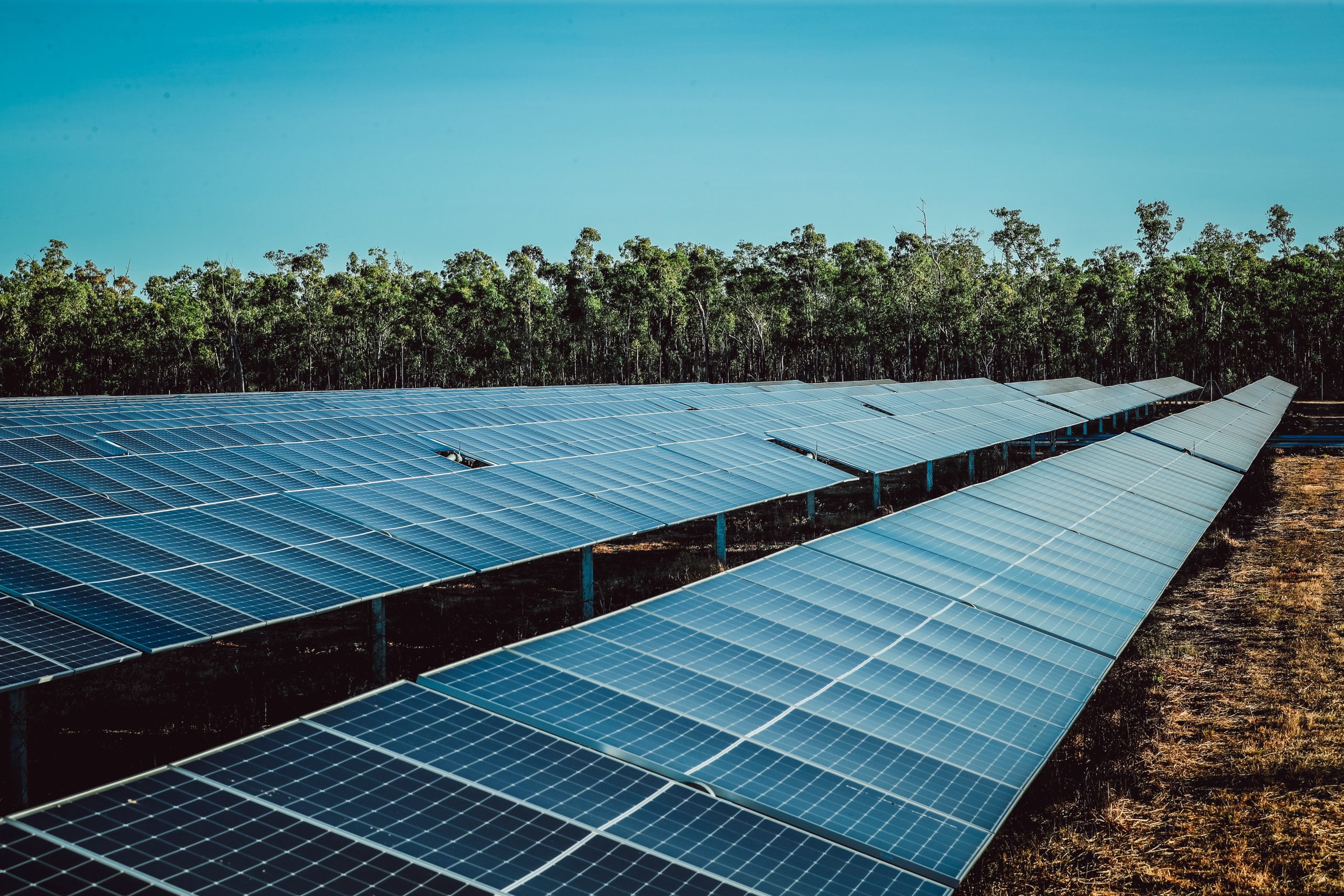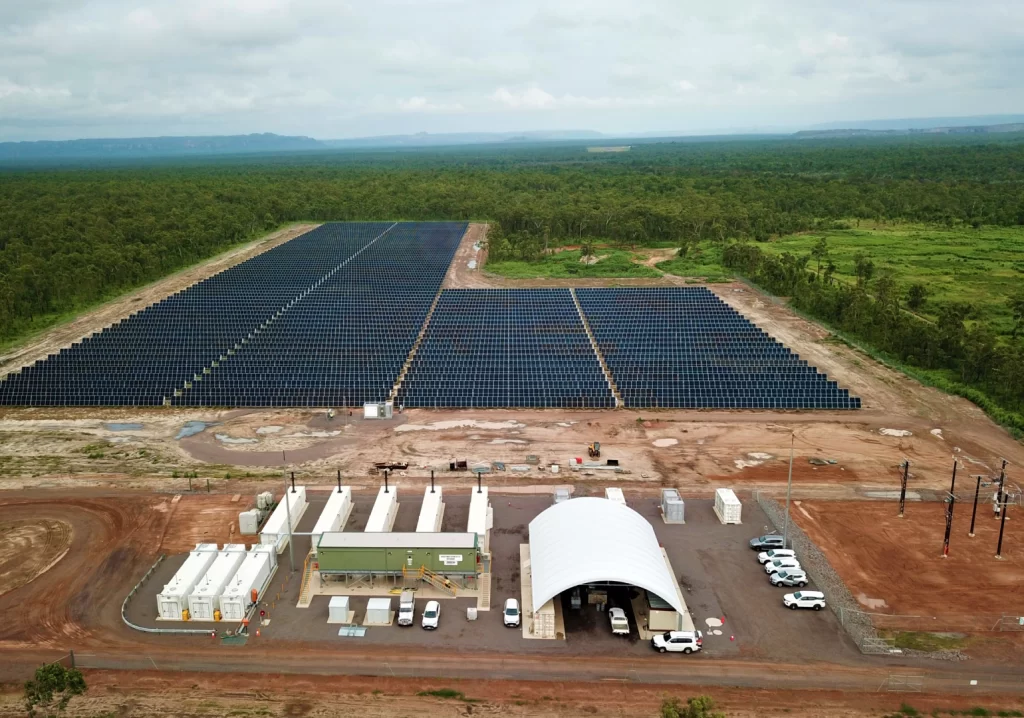A new hybrid power station in the Northern Territory provides a glimpse into our renewable energy future.
Jabiru is a town in the Northern Territory, established to service the Ranger Uranium Mine. The mine supplied the town with a diesel-fueled electricity supply, which could be unreliable — affecting locals in the extreme heat and disrupting business operations.
With the mine beginning its closure program in 2019, the NT government was on the hunt for an innovative renewable energy solution. Seeking to further invest in Jabiru’s potential as a significant tourist hub due to its proximity to Kakadu National Park, they went out to market for a high renewable energy station.
Senior Project Manager Aidan Davies said EDL was selected as the successful respondent.
“We built the project on behalf of the NT government, and we sell power back into Jabiru through Power and Water Corporation, the state’s utility provider,” he told create.
Jabiru Hybrid Renewable Power Station, which integrates a 3.9MW solar farm with a 3MW/5MWh battery and 4.5MW diesel generation, has a minimum 50 per cent renewable energy target per annum, achieved through a mix of solar and battery.
Opening in 2022, Jabiru celebrated its first 500 days of solar power in August.
The transition from fossil-fuelled electricity to a hybrid renewable energy source has reduced emissions by 4500 t of CO2e annually – similar to taking 1500 cars off the road each year – significantly contributing towards NT’s 50 per cent renewable energy by 2030 goal.
However, as Kakadu is a world heritage listed site where Aboriginal people have lived for more than 50,000 years, cultural and environmental preservation was of the utmost importance. Here’s how EDL pulled it off and received the Engineers Australia Excellence Award, Northern Division.
Consultation and engagement
Taking Jabiru’s rich cultural history into account through community and cultural engagement was central to the project’s success.
“As Jabiru is located in Kakadu, there were stringent Environment Protection Authority requirements we needed to meet,” Davies said.
The stakeholder management planning that went into the project involved talking to key bodies within the town from the outset.
The EDL team attended community forums to discuss the work they were doing as a part of that transition, with the town also benefiting from new medical centres and services.
“Power is key to keeping the town thriving,” he said. “We were the first project to go ahead in the new Jabiru transition, so we worked closely with the body established to manage the process and explained how we could bring the community along for the journey.”
To manage the transition from mining state to future tourism town, local Traditional Land Owner ranger groups were engaged to undertake land clearing work from an environmental and cultural heritage perspective. A large environmental habitat offset area adjacent to the site was set aside for the rangers to manage and care for threatened species, including the black-footed tree-rat.
The engagement with the Djurrubu Rangers was a great opportunity for capacity building in the local teams, where they were exposed to working in a commercial environment.
“This has helped increase their skills and experience to manage Kakadu and collaborate more broadly with other contractors,” Davies said.
“We used local contractors for whatever work we had available on site.”

Power station design
Over the years, EDL has developed an energy model that is based on assessing renewable resources available in certain locations, as well as capital and operational costs.
Then, depending on the customer’s requirements, the energy model runs thousands of simulations to optimise the configuration of the hybrid renewable power station.
“We look for a levelised cost of energy solution, then optimise our conceptual station design to meet our customers’ power quality and reliability requirements,” Davies said.
“For Jabiru, the ultimate solution we landed on was balancing the solar, battery and thermal generation for when the sun’s not shining.”
During the day, the station draws 100 per cent solar from the farm, with the battery kicking in during the evening and the diesel there as a backup – an achievement Davies attributes to the talent within the team.
“We’ve built about five or six advanced hybrid renewable stations now, and EDL has managed to retain the same core body of engineers that worked on our very first project at Coober Pedy,” he said. “We have a deep understanding of how to integrate renewables and thermal generation sources.”
EDL also developed its own control system to manage dispatch to thermal energy sources, working closely with other suppliers to ensure that integration and testing was done offsite, and ready to go when required.
“The control system takes inputs from the resources we have available, monitors solar outputs and looks at how much demand we have,” Davies explained.
In the event of cloud cover, the control system allows the battery to discharge, deferring the start of the diesel engines and saving fuel.
“If the sun starts shining again, it will allow the solar to start producing energy and the battery to be topped up. But there are certain thresholds we will start to meet when diesel generation is needed to support the reliability of the system.”
A blueprint for success
With the station now up and running, the project’s success demonstrates that the Jabiru blueprint can be replicated in multiple locations across Australia.
“Australia has a lot of remote communities and off-grid remote mines that are serviced by traditional thermal energies like coal, gas or diesel,” Davies said. “The broader industry is looking at examples like this and seeing that it can exceed the power quality, reliability and performance aspects that traditional generation has always met.”
The engagement with the community demonstrates these projects can go ahead in culturally, environmentally sensitive areas such as Kakadu while achieving “incredible outcomes”.
“The highlight for me as project manager has been to see the positive environmental and community benefits of EDL’s work with the rangers continue long after the project has been delivered,” Davies said.
The national Excellence Awards are to be announced in Melbourne on 29 November. Register for the Gala event here.
